When the communist regime fell in 1989, among t he many changes that followed were those in the education system. Innovative teachers and others in education used the opportunity they suddenly had to leave what many of them saw as an old-fashioned system behind and create something new. They set out to found modern educational institutions employing the most up-to-date methods and knowledge.
“We gave students the opportunity to solve problems, suggest changes, and propose new activities in school by debating them in the student council, where each class has its own representative. This council even participates in classification conferences, meaning, for example, that they speak and have a say in what marks they are given for their behaviour,” Mária Smreková, one of the founders of the first private gymnasium (as the more academically focused secondary schools are known) in Slovakia, 1. súkromné gymnázium, told The Slovak Spectator. “This caused an absolute shock, but it’s an excellent way of teaching cultivated debate and democracy. We continue to do it to this day.”
The Slovak Spectator spoke with Smreková and Eva Ohraďanová, President of the Association of Private Schools and Educational Institutions (ASŠŠZ), about the beginnings of private education in Slovakia, differences between state and private schools, the unflattering results of Slovak students in recent PISA testing, curriculum reforms, and more.
Can you recall the conditions under which private schools were first launched in Slovakia?
Eva Ohraďanová (EO): The Velvet Revolution paved the way for private schools to emerge in the 1990s. At the start it was difficult for everyone, whether for clerical schools that had been run in the past and set up again, or for private schools that were starting from scratch. What they all had in common was the desire to do things differently, to bring something new, to communicate differently with pupils and to create a new atmosphere in schools. They also all had the courage to break what at the time was basically new ground.
Mária Smreková (MS): There were three reasons why we, a group of four teachers at the Gymnázium on Ulica Ladislava Sáru 1, Bratislava, launched the first private secondary school in Slovakia, in 1991. The first reason was that we saw a need for the position of teacher and pupil to change. We believed that they should be partners in the educational process, that it was supposed to be about cooperation in education. The second reason was that at the time in schools there was little, if any, interconnection between individual subjects in educational areas. The third reason was that most schools used old education methods even though there were so many new methods available that had already been tried and tested abroad. And we wanted to use them.
It was difficult because of the way state schools viewed us – they saw us as a competitor with better financial security because we collect tuition fees, but also the state subsidy to which every child is entitled. I only recall that during the first years, before a proper funding scheme was created, private schools only received 650 Slovak crowns (around €20) per pupil per month from the state, and we often had problems obtaining even this, which caused us financial difficulties.
Has this changed over the years?
MS: Yes, today [state] funding of state and private schools is equal. Nevertheless, some people still think we are making money off our pupils but all the money from the fees we charge is invested back into their education either in the form of better equipment or higher remuneration for teachers, as the whole educational sector, including state schools, is grossly underfinanced. But it needs to be pointed out that schools and facilities in ASŠŠZ are actually non-state schools and not ‘private schools’ in the same way there are ‘private schools’ abroad. Our institutions are called ‘private’, but they are performing an education service on behalf of the state and they follow the state curriculum. The way we teach it is different compared to state schools, but we do not operate in the same way as private schools abroad, which are separate from the state, do not receive any state subsidies, and can teach whatever they want. We’re bound by laws and the state curriculum and by what the state wants the students to know.
What distinguishes state and private schools today?
EO: As far as their legislative status is concerned, they are, except for a few minor differences, equal. What really sets us apart is our freedom from the civil service apparatus. Also, in the state education sector there are a lot of wonderful innovative teachers, but they often face difficulties in their schools when introducing anything new. In private schools this is easier, faster and more straightforward. We do not need to wait for an official stamp. Our hands are more ‘untied’ when it comes to procedures and experimenting with various teaching methods. On the other hand, we bear more responsibility for every step we take. MS: What also differentiates us from state schools is that we work with pupils who have, or their parents have, chosen us either because of the prestige private schools have, their different teaching methods, or because private schools usually have fewer children and more assistants in classes, better equipment, better food or simply cleaner toilets.
Are private schools accessible to children from underprivileged backgrounds?
EO: As we collect tuition fees, there might be an impression that private schools are only for those wealthy enough to afford them, but this is not true. Private schools have various support schemes for talented children from socially weak environments, either funded from tuition fees, donations or the 2-percent tax allocation scheme. The only thing that matters is these children’s passion for learning and motivation. And that’s what we want to work with, not with parents’ wallets.
MS: At our secondary school, tuition fees are evaluated individually. We had a student who finished school, then graduated from university and is only now going to pay back his tuition fees. Nobody has ever left our school because they couldn’t afford the school fees.
What is the usual range of tuition fees?
EO: This depends on the individual school, where it is located and how it is equipped – it might range from a small number of euros up to hundreds per month.
The Association of Private Schools and School Facilities (ASŠŠZ)
An apolitical, independent, non-profit and non-governmental organisation that brings together the founders and directors of private schools and school facilities. It is the only organisation working to protect the equal status of private schools and other educational institutions as a legitimate part of the educational system in Slovakia. It represents more than 200 founders and principals from private educational facilities – kindergartens, elementary schools, secondary schools, elementary art schools and conservatories, as well as school facilities (leisure centres and school clubs, and counselling and prevention centres). Together, these are attended by about 100,000 students. The association will this year celebrate the 30th anniversary of its founding.
What is the current share of private educational facilities among the total number of educational facilities?
EO: Approximately 2 percent – the number is in the thousands. In 1994, there were only 30 private schools. Today, we ensure compulsory school attendance in private schools for 5 percent of school-age children, about 44,000 children. We also have 30 percent of pupils in private leisures activities , about 330,000 children.
Are there any general benefits that private schools have brought to the education sector since they first appeared in Slovakia?
EO: We have brought plurality and different prospects. It was often only with the advent of a private school that local state schools began to change, too. So today, after more than 30 years, we can really say that private schools have their place in Slovakia, and enjoy a status equal to state schools, even though not quite entirely. There are areas where we still need to strengthen the position of their founders. But we are a respected partner at all levels, including at the highest – at the ministerial and parliamentary level.
What is your opinion about the performance of 15-year-old Slovak students in the international PISA assessment? Education Minister Tomáš Drucker described the results as “tragic”.
MS: There may be plenty of reasons why the results of Slovak students were so unflattering. Sometimes there is a problem in translation, sometimes the task is too easy, and students expected something more complex. But, in my opinion, the basic problem is too much memorisation, which is a kind of legacy of the previous regime, even though things are a bit better than in the past. Instead of memorising, we should teach our children critical thinking, from as early as six years old. I need to stress that reading with understanding is not something restricted just to the Slovak language but applies also to maths, the social and natural sciences, as well as to culture and the arts, etc.
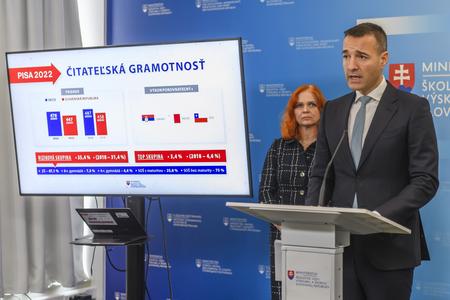
EO: I see the PISA results as a confirmation of the urgent need for change. If anyone still hasn’t figured out that we’ve already missed the train, this should be a clear sign that we have to start running fast and maybe we’ll catch the last carriage. Times are changing, children are changing and we can’t just go on teaching them old things, including memorisation, which is killing creativity. For example, we still teach children about the reproduction of unicellular organisms, which became extinct in the Tertiary period. To get this information, they only need a mobile phone and connection to the internet. What we need to teach them is where to look for reliable information, how to work with it, how to safely work in the online environment, how to identify hoaxes, and so on. We should focus on the process of learning, not a package of facts. Actually, the amount of ‘things’ students need to learn should be reduced and instead there should be a focus on skills like creativity, cooperation, communication and critical thinking. Let’s not just give them fish, but teach them fishing.
How did students of private schools perform in PISA testing?
EO: We don’t know. Five years ago the published results showed state and private schools separately, and there were subjects in which students from private schools performed better. But this time only the results of the whole country in general were published.
To what extent is teaching at private schools bound by the national curriculum? EO: 100 percent, although there is some degree of freedom. To put it another way: it would not be a problem for us at all to fulfil the state curriculum 100 percent – if it were different. We face information overload and children do not need more information from us. They need to know how to understand information, how to select it, how to verify it, how to seek relationships, respect each other and lead an orderly life, how to remain human in today’s world.
Curriculum reform is being undertaken in Slovakia. Will this help?
EO: In my opinion, we should be even braver and reduce the curriculum even more than has been proposed. Scalability in the education system is also lacking. Not every student needs to be perfect in each subject. Teachers need to talk to each other about which kid is better at what and agree on subjects on which they should focus. For example, a child is an excellent linguist, so they’re not pushed to excel in maths – that way the child will not feel like a loser because as the teacher I won’t make them feel that way. In terms of curriculum reform, we are in a pilot phase at the elementary school level. As the first students will start graduating from the new education system around 2035, we need to start reform at the level of secondary schools as soon as possible.
MS: For us as private schools, curriculum reform is an open page where we can finally do what we want without waiting for someone to slap our wrist. That’s what we expect and want – to have freedom and responsibility in what we do.
What is the biggest challenge that the education sector will face in the next 5-10 years?
MS: The basic problem is that so far each government has wanted to achieve tangible results during its fouryear term. But this is impossible in a sector like education. Each change in the education system needs years before it brings results. Now, for the first time, we are in a situation where some processes, for example curriculum reform, which will run over multiple election periods, have been launched.
EO: In terms of the future, nobody knows what the biggest challenge will be, but we know what we should always keep in mind: that students are human beings, that they need to learn to be fully responsible for their actions and attitudes, that they need to know themselves well enough to recognise their strengths and build on them.


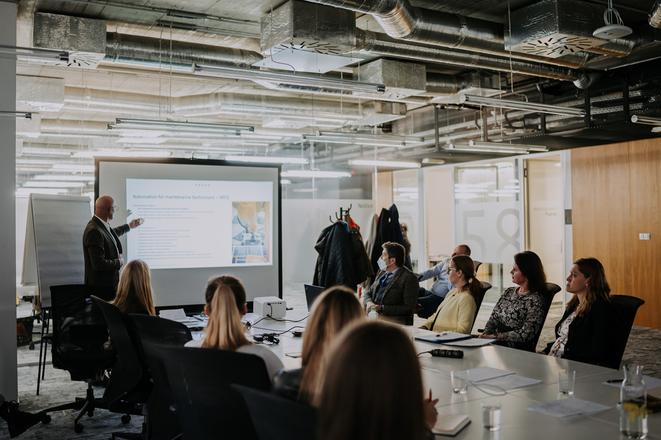 Eva Ohraďanová attending a session of the Košice Self-Governing Region about the Valaliky Industrial Park and the potential for involving private schools. (source: Peter Čontoš)
Eva Ohraďanová attending a session of the Košice Self-Governing Region about the Valaliky Industrial Park and the potential for involving private schools. (source: Peter Čontoš)
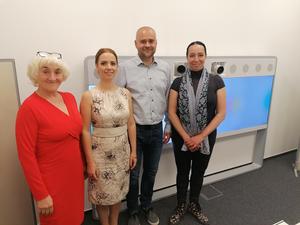 Mária Smreková: A chemistry and physics teacher, she was one of the founders of the first private secondary school in Slovakia, the Bratislavabased 1. súkromné gymnázium, where she was headteacher for many years. Together with František Tóth, the school’s first headteacher and first president of the ASŠŠZ, she also played a key role in helping to launch the Association of Private Schools and Educational Institutions (ASŠŠZ). (source: Courtesy of Mária Smreková)
Mária Smreková: A chemistry and physics teacher, she was one of the founders of the first private secondary school in Slovakia, the Bratislavabased 1. súkromné gymnázium, where she was headteacher for many years. Together with František Tóth, the school’s first headteacher and first president of the ASŠŠZ, she also played a key role in helping to launch the Association of Private Schools and Educational Institutions (ASŠŠZ). (source: Courtesy of Mária Smreková)
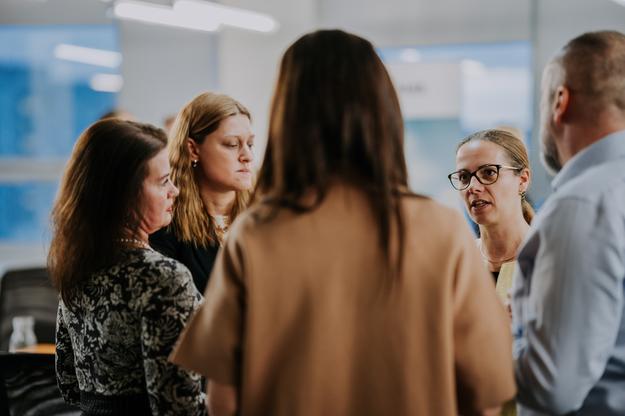 Eva Ohraďanová talking with colleagues. (source: Courtesy of ASŠŠZ)
Eva Ohraďanová talking with colleagues. (source: Courtesy of ASŠŠZ)
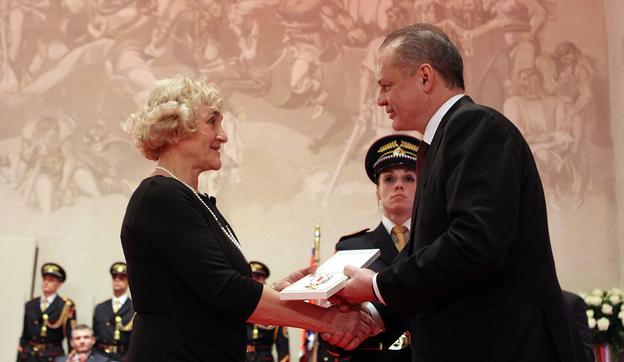 Mária Smreková receiving the Medal of the President of the Slovak Republic from then head of state Andrej Kiska. She was recognised for her many significant contributions in the field of education, upbringing and education. (source: Chancellery of the President of the Slovak Republic)
Mária Smreková receiving the Medal of the President of the Slovak Republic from then head of state Andrej Kiska. She was recognised for her many significant contributions in the field of education, upbringing and education. (source: Chancellery of the President of the Slovak Republic)